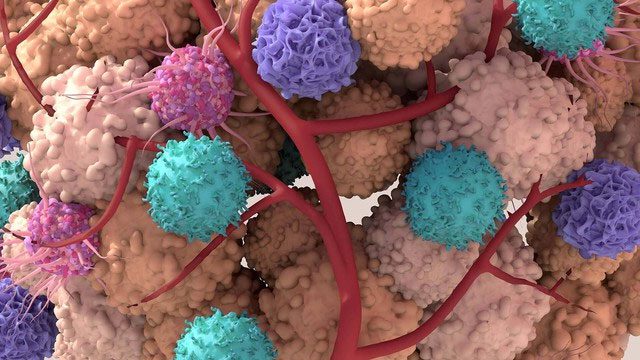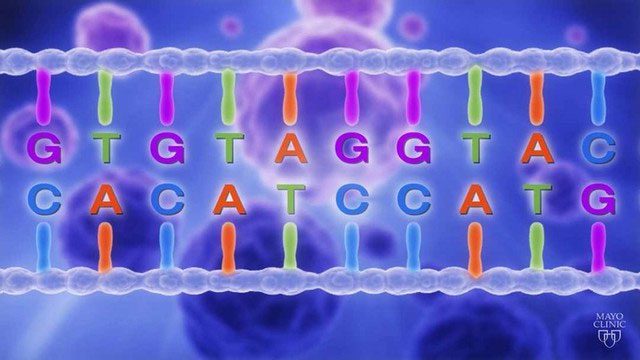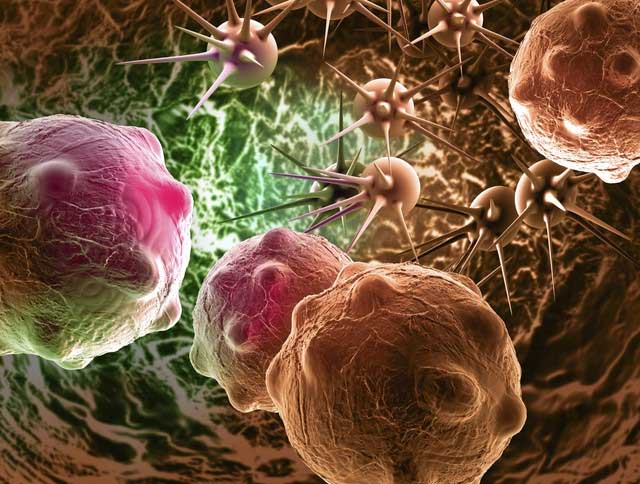Cancer is a devastating disease that claims millions of lives each year. The underlying cause of cancer is cancer cells, which are mutated cells that have the ability to proliferate and change indefinitely, destroying normal tissue cells to form tumors, and potentially endangering overall health.
What we need to understand is that cancer cells are essentially normal cells in our body, but they have undergone changes that make them lose their normal functions and ability to control growth, leading to abnormal proliferation and invasion.
Our bodies are made up of trillions of cells, each with its own gene, a molecule carrying genetic information that determines the characteristics and functions of the cell. Under normal circumstances, cells divide and die in an orderly manner according to genetic instructions to maintain the body’s balance and health.

Cancer cells are essentially normal cells in our body.
However, sometimes errors occur in the genes of cells. These errors are known as mutations, which can cause changes in the characteristics and functions of cells. Most mutations are harmless, and some mutations can even be beneficial for the adaptation and evolution of cells. However, some mutations can make cells harmful, and these mutations are the primary culprits that cause cancer.
So why do cell genes mutate? What factors can cause mutations? In fact, cell genes are very prone to mutations because they are composed of a molecule called DNA. DNA consists of four bases (A, T, C, G) arranged in a specific order, with each base having a corresponding pair; for example, A pairs with T, and C pairs with G, forming the double helix structure of DNA. When cells divide, DNA replicates itself to ensure that each new cell has a complete copy of the gene.
However, during the replication process, some errors can still occur; for example, one base could be incorrectly replaced by another, or an extra base could be added, leading to DNA damage. A change in the sequence is referred to as a point mutation, which is the most common type of mutation. Besides point mutations, there are other types of mutations, such as a specific segment of DNA being duplicated or deleted, or two segments of DNA being swapped; these mutations are called structural mutations and can lead to changes in the structure of DNA.

Abnormalities in chromosome number cause changes in the cell’s gene pool.
Additionally, there is a type of mutation known as chromosomal abnormalities, which means that the number of certain chromosomes (structures containing multiple DNA strands) is either more or less than the normal amount, causing changes in the cell’s gene pool.
So how do these mutations occur? What factors can promote the appearance of mutations? In fact, the occurrence of mutations is a random, unpredictable, and inevitable process.
However, there are some factors that increase the likelihood of mutations, known as mutagens, which include chemical substances such as tobacco, coal tar, benzene, arsenic, etc., that can directly or indirectly damage DNA and cause mutations. These chemicals are known as chemical carcinogens and are among the significant causes of cancer.
In addition to these external mutagens, there are also internal factors such as age, genetics, immune function, etc. that can affect the occurrence of mutations. In summary, the emergence of mutations is a complex process influenced by many factors, and each individual’s circumstances are different, making it very difficult to predict and precisely prevent the occurrence of mutations.

The occurrence of mutations is a random, unpredictable process.
We know that cancer cells arise from mutations in normal cells, but not all mutations lead to cancer. In reality, our bodies have a very complex mechanism to detect and repair mutations or eliminate mutated cells to prevent the emergence of cancer.
So how do cancer cells escape these mechanisms to survive in our bodies and even grow? This requires us to understand a few key points about the characteristics and behaviors of cancer cells. First of all, we need to know that cancer cells are not produced overnight; they undergo a long process that can be divided into three stages.
The first stage is the initiation phase: this is the first stage of cancer and also the most critical stage. In this phase, several important mutations have occurred in the genes of the cells, known as cancer-causing gene mutations, which will give the cells certain advantageous characteristics for cancer, such as increased cell division, reduced capability for normal cell growth, and resistance to cell death, etc.

Not all mutations lead to cancer.
These mutated cells are the initial form of cancer cells; although they are still few and weak, they have the potential to become cancerous, and given the right conditions, they will continue to develop.
Next is the disease development phase: this is the second stage of cancer and the longest stage. In this phase, cancer cells have not yet completely escaped the control of normal cells; they still require some external stimuli to continue proliferating and growing. These stimuli are known as cancer-promoting factors, which include some mutagenic factors and certain factors that can stimulate cell growth, such as hormones, growth factors, inflammatory factors, etc.
These cancer-promoting factors will cause cancer cells to undergo many more mutations, leading them to acquire more cancerous characteristics. Finally, the progression stage: this is the third stage of cancer and the most dangerous stage. In this phase, cancer cells have completely escaped the control of normal cells and no longer require any external stimulation; they can proliferate and evolve autonomously. These cancer cells have formed an organized structure known as a tumor, which can invade surrounding normal tissues and even spread to other parts of the body through blood or lymphatic fluid to form metastases. This is a malignant tumor that we commonly refer to as cancer.

The creation of cancer cells is a very complex process.
These cancer cells have completely lost the characteristics and functions of normal cells; they only know how to continuously deplete the body’s resources, disrupt the body’s balance, and endanger overall health.
From the introduction above, we can see that the creation of cancer cells is a very complex process that requires the coordination of multiple factors and the accumulation of many mutations to ultimately form cancer. This also indicates that preventing and treating cancer is a very challenging task, requiring comprehensive intervention and management from various aspects, levels, and perspectives. We cannot expect a method that can simply eliminate cancer, nor can we trust certain unscientific treatment methods; rather, we need to establish scientific approaches to combat cancer, the common enemy of humanity.



















































